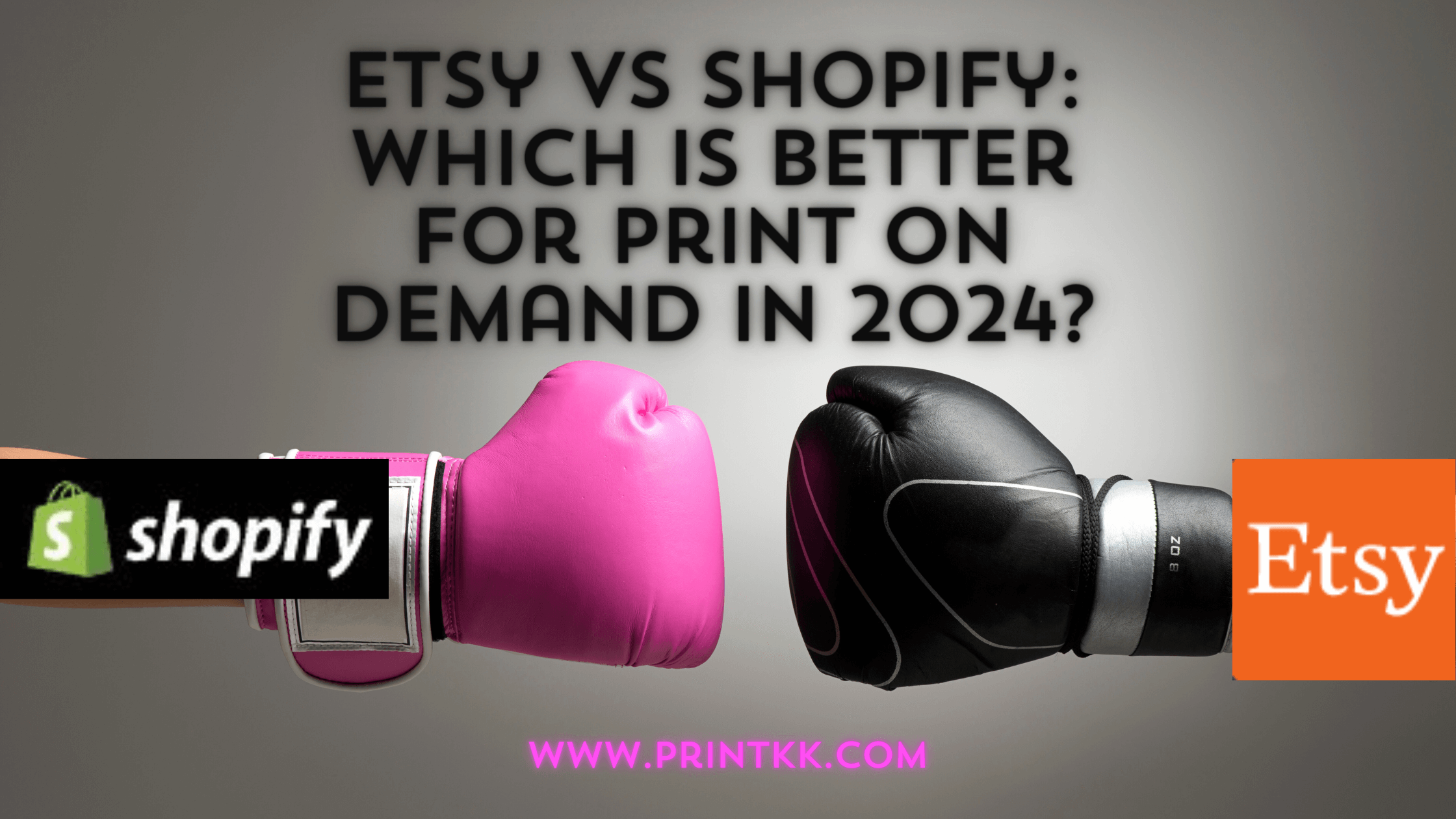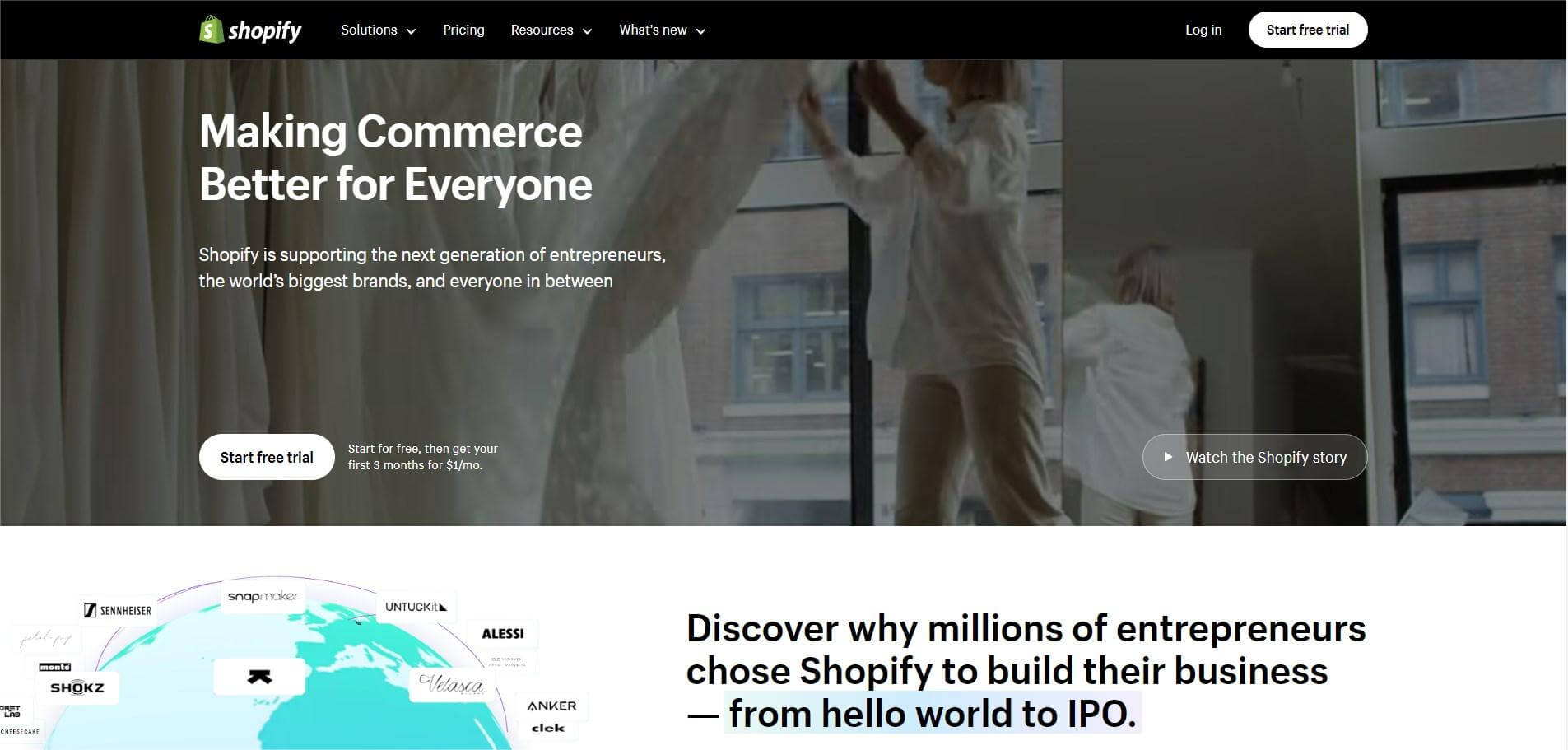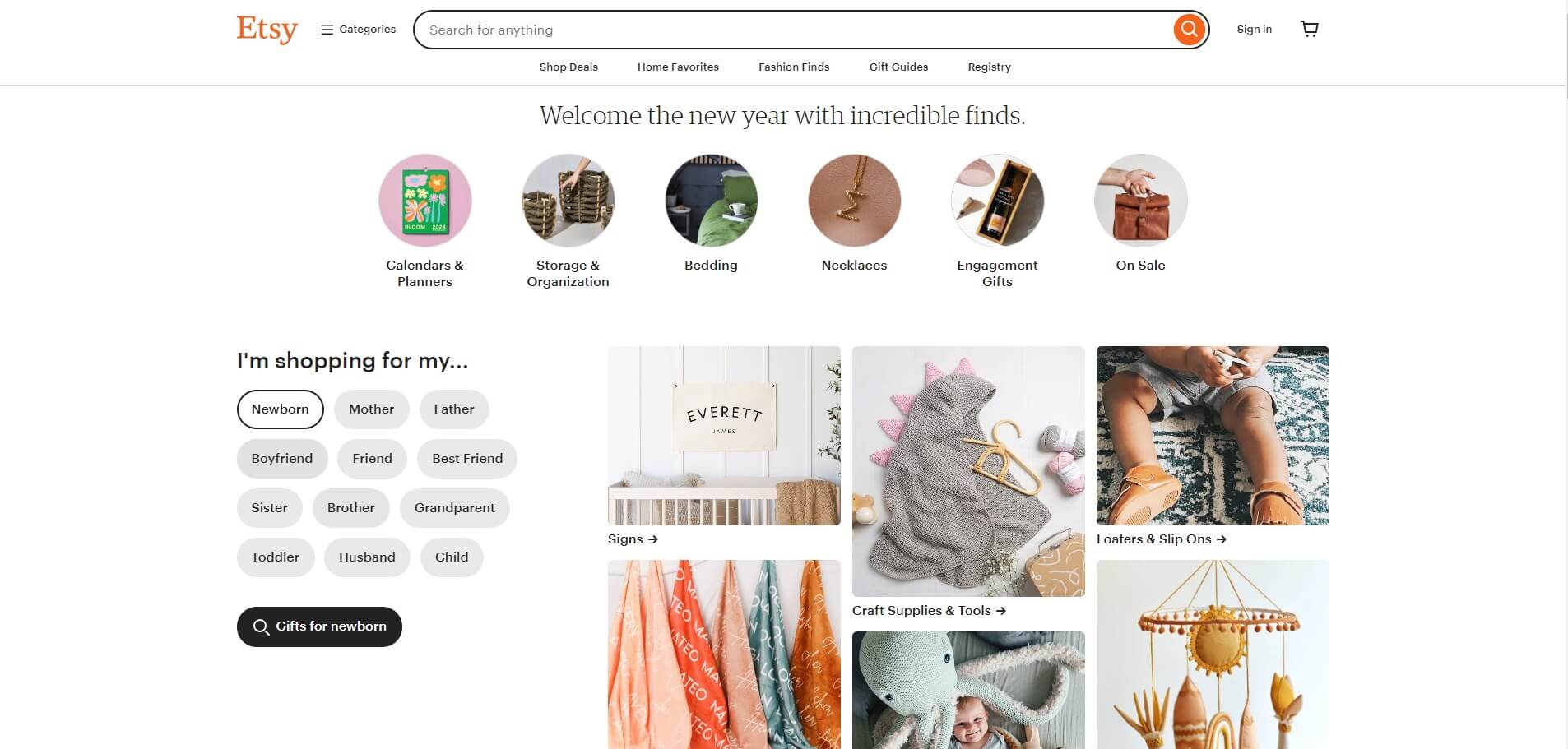
Are you grappling with the decision of whether to choose Etsy or Shopify for your Print on Demand business? This common dilemma can be perplexing, especially when you're navigating the complexities of online retail. But don't worry, we're here to break down the essentials, comparing Etsy and Shopify, to help you make an informed decision that aligns perfectly with your business goals and strategy.
What Is Shopify Print on Demand?
Shopify Print on Demand is a versatile platform that allows entrepreneurs, designers, and businesses to create their own online stores for selling custom-printed products. Unlike marketplaces like Etsy, Shopify offers a unique integration-based model. Users can connect with various printing and fulfillment services through third-party apps, facilitating a streamlined production process. This setup is ideal for those seeking a personalized brand presence and a tailored customer shopping experience.
The key feature of Shopify's print-on-demand service is its focus on customization and scalability. It provides users the flexibility to design their store in line with their brand identity, catering to a range of products from apparel to home decor. This aspect is particularly beneficial for businesses and artists aiming to differentiate their online presence in a competitive market. Additionally, Shopify's infrastructure supports scalable growth, making it a suitable choice for expanding businesses and organizations.
Pros and Cons of Shopify Print on Demand
When evaluating Shopify Print on Demand for your business, it's crucial to weigh its pros and cons. Shopify excels in offering extensive customization and scalability, which are significant assets for anyone looking to grow their brand and tailor their online store. However, it's also important to consider the costs associated with these benefits. Here's a brief overview:
| Pros | Cons |
| Customization: Offers extensive options to tailor the look and feel of your store, enhancing brand identity. | Initial Setup: Setting up a Shopify store can be time-consuming, especially for those unfamiliar with e-commerce platforms. |
| Scalability: Efficiently accommodates business growth without compromising performance, ideal for expanding product lines and customer base. | Costs: Involves monthly subscription fees and transaction costs, which can add up, especially for small-scale businesses. |
| Wide Product Range: Provides access to a diverse array of products for printing, catering to varied customer preferences. | Learning Curve: New users may find the platform's features and integrations challenging to master initially. |
| Integration: Seamless integration with various print providers and fulfillment services streamlines the order processing. | Independence: While offering freedom, it also places the onus on you to drive traffic and sales, necessitating marketing and SEO efforts. |
What Is Etsy Print on Demand?
Etsy Print on Demand (POD) offers a distinct approach, appealing particularly to artists, designers, and small business owners. It operates within Etsy's well-established marketplace, providing a platform for creators to sell custom-printed products without the need for inventory. This model is especially attractive for those seeking to leverage Etsy's vast customer base and its reputation for unique, handcrafted, and artistic items.
Etsy's POD service is integrated within its marketplace, meaning sellers can list their print-on-demand products alongside handmade and vintage items. This integration is a significant advantage for sellers who aim to reach customers already familiar with and loyal to the Etsy platform. Additionally, Etsy's focus on unique, creative products makes it an ideal platform for artists and designers who wish to market their original designs. The platform's user-friendly interface and community-centric approach provide a supportive environment for independent creators and small businesses.
Pros and Cons of Etsy Print on Demand
For those considering a foray into the world of online retail with custom products, Etsy offers a unique platform. It stands out for its accessibility to a large, diverse customer base and its appeal to niche markets, particularly for custom and artistic products. However, this comes with the challenges of a saturated market and a fee structure that includes listing and transaction fees.
| Pros | Cons |
| Vast Audience:Etsy's global reach provides sellers immediate access to millions of potential customers. | Market Saturation: The platform is highly competitive, with many sellers offering similar products. |
| Niche Market Appeal: Ideal for unique and artistic items, catering to customers seeking custom-made products. | Fee Structure: Involves listing fees and a percentage of sales, which can impact overall profitability. |
| User-Friendly: The platform is known for its ease of use, making it simple for new sellers to set up shops and list products. | Limited Customization: Less flexibility in branding and customer experience compared to having an independent online store. |
| Community Support: Etsy provides a robust community and support resources for sellers, including forums and educational materials. | Visibility Challenges: Sellers often rely on Etsy's search algorithm for visibility, requiring good SEO practices to stand out. |
The Benefits of Selling on Etsy and Shopify
Choosing between Etsy and Shopify for selling print-on-demand products involves understanding the distinct benefits each platform offers. While both are popular choices among entrepreneurs, small business owners, and creative individuals, they cater to different aspects of online retail and audience engagement.
Etsy Benefits:
Access to a massive, established customer base interested in unique, creative products.
Ideal for artists and designers looking to reach an audience that appreciates handcrafted and artistic items.
Community-focused platform with strong support and resources for sellers.
Simplified setup process, making it easy for beginners to start selling.
Shopify Benefits:
Complete control over branding and customization of the online store.
Scalable platform that grows with your business, suitable for all sizes from individual artists to large organizations.
Integration with a wide range of apps and print-on-demand services.
More autonomy in marketing and SEO strategies, offering the potential for higher profit margins.
Key Differences Between Shopify and Etsy Print on Demand
Distinguishing between Shopify and Etsy's Print on Demand offerings is vital for those immersed in the print-on-demand industry. Each platform caters to distinct aspects of online selling and presents unique features that can significantly impact the success of a business. This comparison not only sheds light on the basic differences but also delves into the more nuanced aspects of market reach, product diversity, and marketing strategies, providing a comprehensive view for entrepreneurs and designers to make an informed decision.
| Aspect | Shopify POD | Etsy POD |
| Support Features | Offers extensive support including apps and plugins for POD. | Provides basic support tailored to a marketplace environment. |
| Prices and Fees | Charges a monthly subscription fee, with different plans available. Transaction fees vary based on the plan. | Has listing fees and transaction fees, which are generally lower but can add up with sales volume. |
| Customizability | High level of customizability for storefronts, allowing for a unique brand presence. | Limited customization options for storefronts, focusing on product listings within Etsy's standard layout. |
| Market Reach | Requires self-driven market reach and customer acquisition. | Benefits from Etsy's existing large customer base. |
| Product Diversity | Flexibility in product types and vendors. | Limited by Etsy's focus on handmade, vintage, and unique items. |
| SEO and Marketing | Greater control over SEO and marketing strategies. | Relies more on Etsy's internal search and marketing tools. |
Shopify and Etsy for Print on Demand Branding
In the context of Print on Demand (POD), Shopify and Etsy offer distinct branding opportunities for businesses. Shopify excels as a platform for creating a unique brand identity. Its customizable storefronts allow businesses to craft a distinctive online presence, essential for establishing brand recognition and loyalty. This level of customization is particularly beneficial for businesses aiming to stand out in the competitive online market.
On the other hand, Etsy offers a different approach to branding. While customization options for storefronts are more limited compared to Shopify, Etsy's marketplace is known for its unique, handcrafted, and artistic products. This reputation can be leveraged by businesses to align themselves with the platform's established brand. Selling on Etsy means becoming part of a community known for creativity and quality, which can be a powerful tool for building a brand that resonates with a specific audience.
Shopify and Etsy for POD Suppliers
For POD suppliers, both Shopify and Etsy offer unique advantages and considerations. Shopify, known for its robust e-commerce platform, allows suppliers to create a comprehensive online store with extensive customization. This flexibility is key for suppliers who want to offer a wide range of products and control over the branding and customer experience. Shopify's integration capabilities with various POD services streamline the process, making it easier for suppliers to manage inventory, fulfill orders, and update product listings efficiently.
Etsy, while different in its approach, provides suppliers access to a dedicated and diverse customer base interested in unique, artisanal, and custom products. As a supplier on Etsy, the focus shifts to leveraging the platform's niche market appeal. This is particularly advantageous for suppliers specializing in handcrafted or artistically designed products. However, Etsy's platform may not offer the same level of operational control or customization as Shopify, making it more suited for suppliers who prioritize market reach and community engagement over complete brand autonomy.
Which Is Better for Your Print on Demand Business: Shopify or Etsy?
Deciding whether Shopify or Etsy is better for your Print on Demand (POD) business depends on various factors including your business model, target audience, and long-term goals. Shopify offers unparalleled customization and control, making it ideal for businesses focused on building a unique brand and scaling over time. Its ability to integrate with various POD services provides flexibility in product offerings and operational management.
Etsy, with its established market of customers interested in unique and handmade items, is a great platform for businesses targeting a niche audience. It's especially beneficial for individual artists, designers, and small-scale entrepreneurs who value community engagement and a lower barrier to entry. However, Etsy's marketplace structure means less control over branding and a reliance on its built-in customer base.
Your choice between Shopify and Etsy should align with your business needs, whether it's the desire for a personalized online store or tapping into a community that appreciates creativity and uniqueness.
Situations When to Choose Shopify

Choosing Shopify for your Print on Demand business is advisable in several key scenarios:
Brand Building: If your goal is to establish and grow a unique brand, Shopify's extensive customization options for your online store are invaluable. This platform is perfect for those who want a tailored look and feel that aligns with their brand identity.
Scaling Business: For businesses planning to expand, Shopify's scalability is a major advantage. It efficiently supports growth in product range and customer base without sacrificing performance.
Operational Control: Entrepreneurs who prefer having full control over their store's operations, from website design to customer interactions, will find Shopify more accommodating.
Marketing Autonomy: If you have a solid strategy for marketing and SEO, Shopify allows more freedom and tools to implement these plans, potentially leading to higher traffic and sales.
Situations When to Choose Etsy

Etsy is a great choice for your Print on Demand business in certain situations:
Niche Market Focus: If your products cater to a niche market or are unique, artistic, and handmade in nature, Etsy's customer base is ideal. The platform is renowned for its community that appreciates and seeks out these types of products.
Lower Upfront Investment: For small business owners or individual artists just starting out, Etsy's lower setup costs and no requirement for a monthly subscription can be more accessible.
Community Engagement: If you value being part of a vibrant seller community and want to leverage the communal aspects of a marketplace, Etsy is the place. It offers a supportive environment for sellers, including forums and seller tools.
Sell Your Print on Demand Products on Shopify or Etsy with PrintKK
Selling your POD products on platforms like Shopify or Etsy with a service like PrintKK can significantly enhance your business operations. One of the primary advantages is the streamlined process of product management and fulfillment that PrintKK provides. This enables you to focus on the creative and marketing aspects of your business, without the hassle of managing the logistical complexities of printing and shipping.
The general steps would include:
For Shopify:
Set up your Shopify store, focusing on your brand and design.
Sign up with PrintKK for seamless integration into your Shopify account.
Integrate PrintKK with your Shopify account for product management and fulfillment.
Upload your product designs to PrintKK and sync them with your Shopify store.
Utilize Shopify's marketing tools to attract customers and drive sales.
For Etsy:
Create an Etsy seller account, aligning your shop with Etsy's unique, creative ethos.
Sign up with PrintKK to manage product printing and shipping for your Etsy store.
Connect PrintKK to manage product printing and shipping.
List your products on Etsy, ensuring they meet the platform's guidelines for unique, handcrafted items.
Engage with the Etsy community and use its tools for visibility and sales.
Using PrintKK often ensures a consistent quality of printed products, a key factor in building customer trust and satisfaction. This level of quality, combined with the efficiency of the service, makes PrintKK an ideal partner for leveraging the unique strengths of both Shopify and Etsy for your POD business.
Summary
Choosing between Etsy and Shopify for Print on Demand hinges on your specific business needs and goals. Shopify offers unparalleled customization and control, ideal for brand building and scalability. Etsy, with its unique market and community, is perfect for those focusing on niche, handcrafted products. Both platforms have their strengths – Shopify in its operational autonomy and Etsy in its established customer base. Understanding these differences is crucial for entrepreneurs, designers, and small business owners in making an informed decision that aligns with their business strategy.
As you embark on your journey in the Print on Demand sector, remember that your choice between Shopify and Etsy should reflect your unique business model and aspirations. Whether you're leaning towards the customization and scalability of Shopify or the niche, community-driven market of Etsy, both platforms offer distinct paths to success. We encourage you to explore further and make an informed decision that best suits your business. Stay tuned for more insights and tips to help you thrive in the ever-evolving world of online retail.
FAQs
Is it better to have an Etsy shop or Shopify?
Choosing between Etsy and Shopify for your shop depends on your business needs. Etsy is ideal for niche, creative products and offers a built-in customer base. Shopify, on the other hand, provides greater control over branding and scalability, suitable for growing a unique business. Your choice should align with your specific goals and market strategy.
Is it cheaper to sell on Etsy or Shopify?
The cost-effectiveness of selling on Etsy vs. Shopify varies. Etsy has lower upfront costs with listing and transaction fees, making it cost-effective for smaller scale or niche sellers. Shopify, while having monthly subscription fees, offers greater control and scalability, potentially yielding higher long-term profits for growing businesses. Your choice should consider both immediate and future financial implications for your business model.
Is Shopify print on demand profitable?
Shopify Print on Demand can be profitable, especially for businesses focused on brand building and scalability. Its customizable platform allows for unique branding and marketing strategies, potentially leading to higher profit margins. Success depends on effective SEO, marketing efforts, and choosing the right products to meet market demands.
Should you have both Etsy and Shopify for print on demand business?
Having both an Etsy and Shopify store for your print on demand business can be beneficial. Etsy provides access to a niche, creative market, while Shopify offers more control over branding and business growth. Utilizing both can maximize market reach and diversify customer base. However, managing two platforms requires more time and effort.
How much does Etsy or Shopify take for print on demand?
Etsy charges listing fees and a percentage of each sale, including shipping costs, which can be cost-effective for smaller or niche sellers. Shopify, on the other hand, has various monthly subscription plans and charges transaction fees if not using Shopify Payments. The exact cost depends on your chosen plan and sales volume, with Shopify generally being more suited for larger scale operations.










 Global Shipping
Global Shipping




























